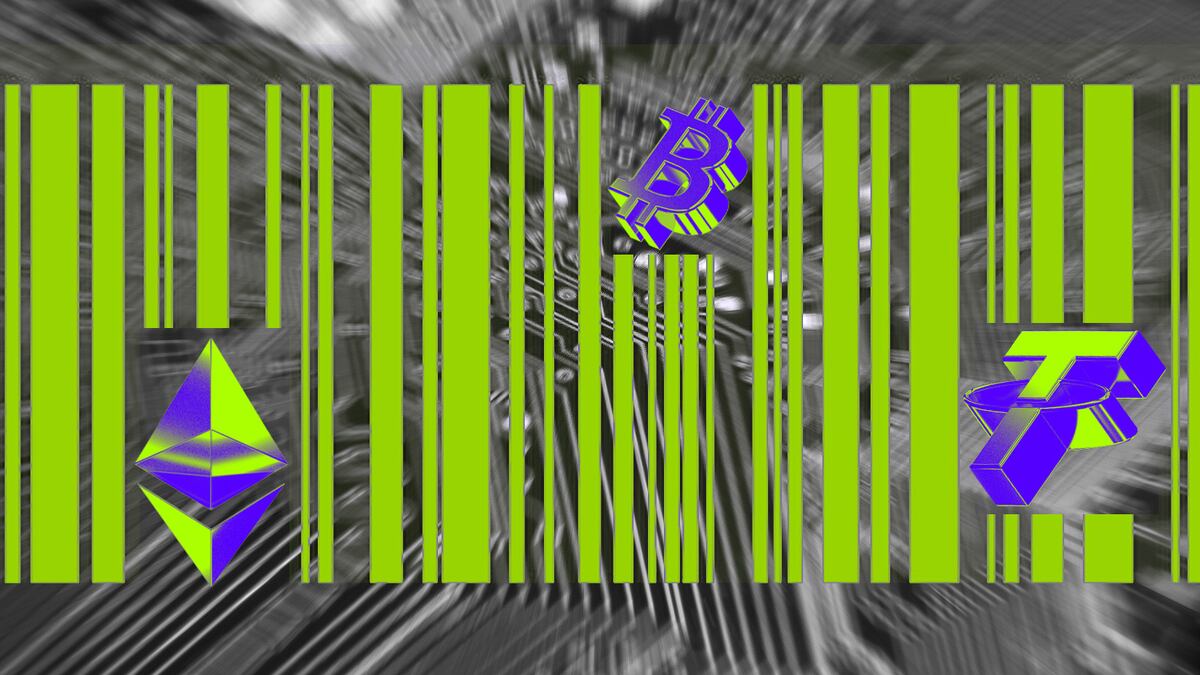- Crypto just quietly took a major step to becoming more like traditional finance.
- An update to a data standard known as the ISIN was unveiled this week that could speed up Wall Street’s crypto land grab.
- However, it’s just the first step to make the unruly sector more like old school trading.
Bitcoin may have started out as an alternative to traditional finance, but cryptocurrencies are rapidly gaining more interest from old-school industry stalwarts.
However, financial giants like BlackRock and JPMorgan have been held back by a lack of regulatory clarity, as well as ways to merge the worlds of decentralised and traditional finance.
That may be about to change. An update to a data standard known as the ISIN, or International Securities Identification Numbers, that was unveiled this week could speed up Wall Street’s crypto land grab and make digital assets more like traditional finance.
“While probably inevitable, there’s a certain irony that the future of crypto looks increasingly tied to TradFi,” regulation expert Sean Tuffy told DL News. “With each development like this, crypto strays a little further from its outlaw roots.”
The ISIN initiative comes at a critical juncture in crypto’s history.
Billion-dollar scandals like the collapses of FTX and Terra have driven a surge in regulatory activity across the world with politicians rushing to introduce new rules for the industry — with varied results — while law enforcement and regulators simultaneously crack down on the sector.
The masterminds of several crypto ventures — such as FTX’s Sam Bankman-Fried, Celsius’ Alex Mashinsky, and Terra’s Do Kwon — await the result of different agencies’ criminal charges against them.
At the same time, the crypto community hopes that the US Securities and Exchange Commission will soon approve one or several Bitcoin spot exchange-traded funds, which could make it easier for traditional finance firms to offer cryptocurrency trading opportunities for their clients.
The pressure for crypto to conform with traditional finance is growing and the new ISIN could play a part in that.
What is the ISIN?
The updated standard may seem obscure, but the ISIN is an important data element that allows global financial markets to function.
Just as supermarket products are stamped with barcodes that enable them to be bought, sold and tracked automatically, financial products such as stocks and bonds are issued with an ISIN when they are created.
But ISINs are designed for traditional finance instruments. So a task force of international standards-setters, including the International Standards Organisation, has been working on adopting these unique IDs to cryptocurrency tickers.
Thematically, it’s another step in the assimilation of crypto into the TradFi Borg, as ISINs could help facilitate more institutional trading.
— Regulation expert Sean Tuffy
This week, the task force announced that ISINs are now available for issuing to cryptocurrencies including Bitcoin and Ether.
The ISINs will help big banks and asset managers get more comfortable with trading cryptocurrencies, the task force said.
Tuffy told DL News there’s a certain irony in cryptocurrencies — developed with libertarian ideals of overthrowing the banking system — being drawn into one the most establishment aspects of markets.
“Thematically, it’s another step in the assimilation of crypto into the TradFi Borg, as ISINs could help facilitate more institutional trading,” Tuffy said.
But as the world’s top investment managers vie to provide spot Bitcoin ETFs and funds, the demand for crypto ISINs is emerging.
“Traditional financial institutions already use ISIN, and are interested in continuing to do that,” Stephan Dreyer, managing director of the Association of National Numbering Agencies, told DL News. “For them, it makes sense to be able to plug Bitcoin into ISIN and just continue going about their work,” Dreyer said.
ANNA coordinates the issuance of ISINs by stock exchanges globally, and is one of the bodies involved in the task force.
ISINS for BTC and ETH
The joint task force has been working on the project since April 2021.
They have essentially linked the ISIN’s identification system and underlying data to that of the Digital Token Identifier, which is also an ID code, but one that’s specially developed for crypto.
Right now, the crypto world identifies tokens via tickers – ETH, BTC, USDT and so on. But these don’t uniquely identify assets, or provide insight into the blockchains they are on.
“The problem is that there are lots of smart contracts and lots of other tokens that are identified with the same identifiers,” Denis Dounaev, product owner at the DTI Foundation, one of the standards-setters involved in the joint task force, told DL News.
That’s where the DTI comes in, Dounaev said — it is engineered to uniquely identify digital tokens, including stablecoins, that have been created on multiple blockchains.
By linking the ISIN to the DTI, users can get a clearer view into the risk profile and lifecycle of individual tokens.
Neil Thomas, chief commercial officer at digital asset exchange AsiaNext, told DL News that introducing ISINs for crypto assets will streamline regulatory compliance, which is crucial for institutional participation.
“This reflects a growing recognition of digital assets and that they’re becoming an integral part of the financial landscape,” Thomas said.
“It underlines the need for transparency, compliance, and standardisation in the digital asset space, bringing them under the same regulatory umbrella as the finance industry,” Thomas added.
Just the first step
The identification of digital assets is the first step in a broader project being pursued by the task force.
The more complex challenge of classifying assets — i.e., encoding the information into an ID as to what kind of asset a digital token represents — is yet to come.
That will track lawmakers’ decisions as they begin to legislate on whether particular tokens are securities or commodities.
That’s been a bone of contention among regulators in the US, where SEC chair Gary Gensler says most crypto assets are securities, while his counterpart at the Commodity Futures Trading Commission says most such assets are commodities.
Meanwhile, efforts to pass a draft law that would put in place a comprehensive market structure for crypto have been paused thanks to political infighting.
Tuffy said the development of the ISIN for digital assets is a sign that capital markets firms will lay claim to crypto, with or without the help of regulators.
“ISINs being made available for crypto highlights the still slow response by some regulators. As many still struggle to finalise rules, the gears of the financial system continue to turn,” he said.
Have a tip on crypto regulation? Email the author at joanna@dlnews.com.


